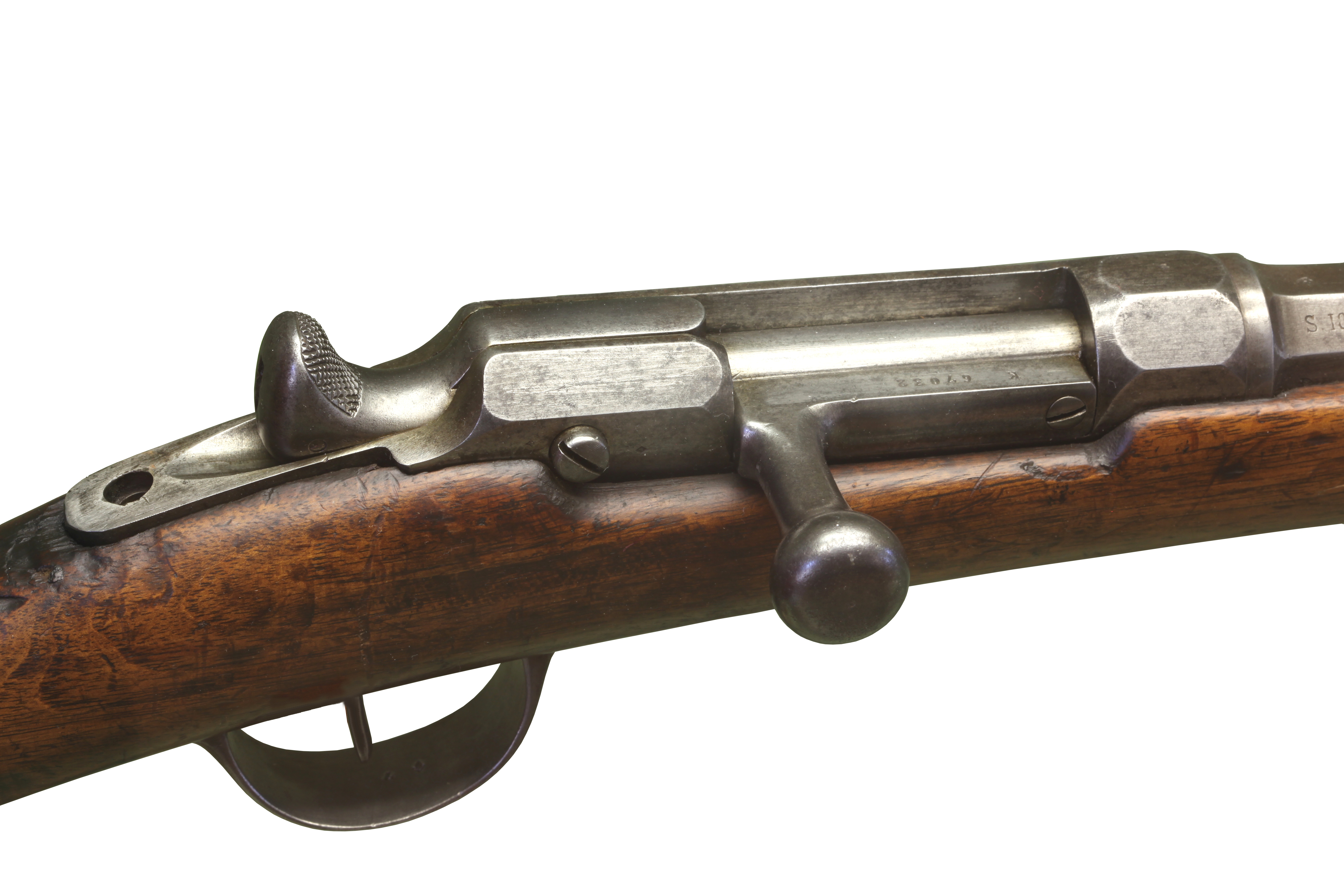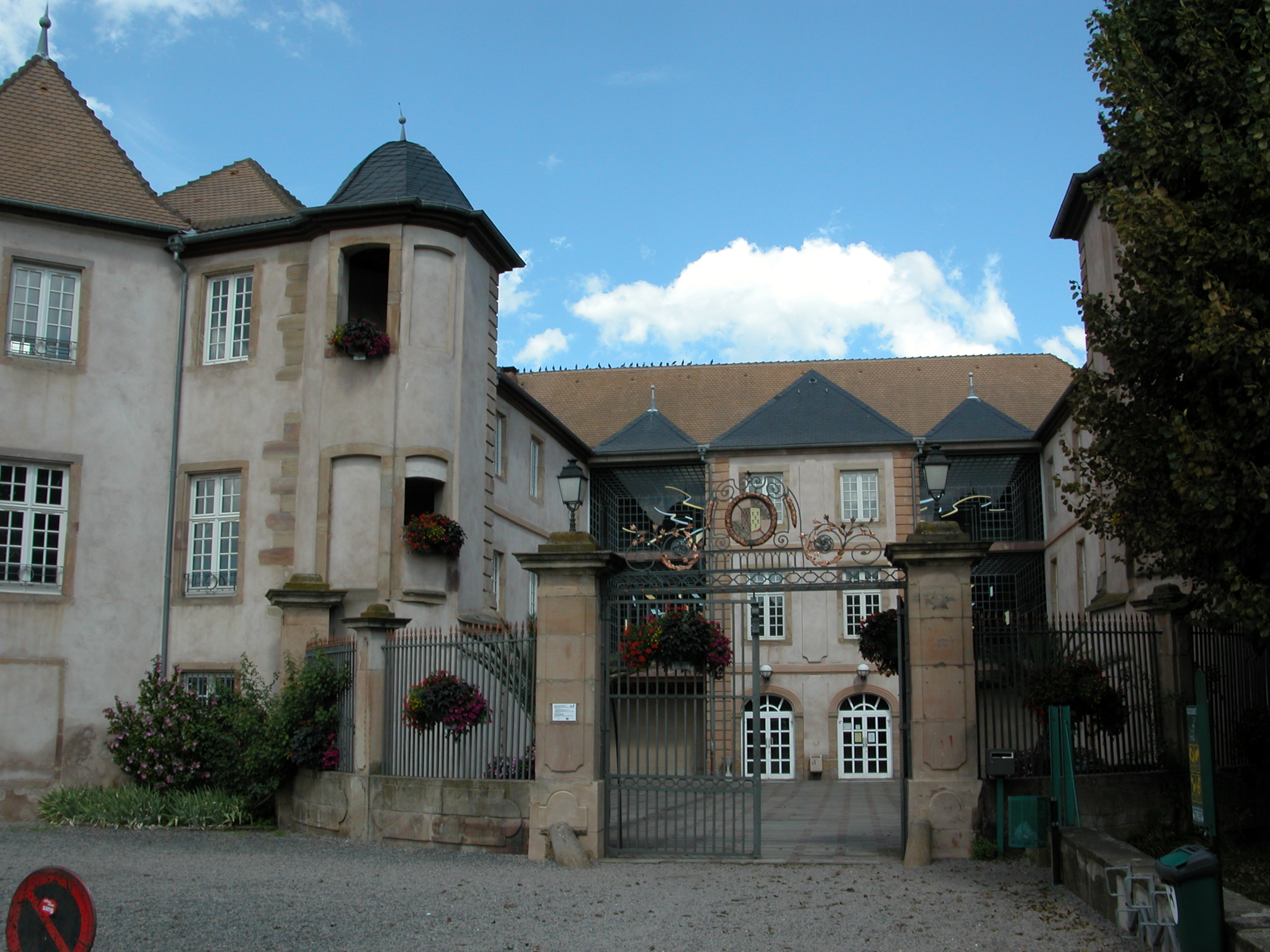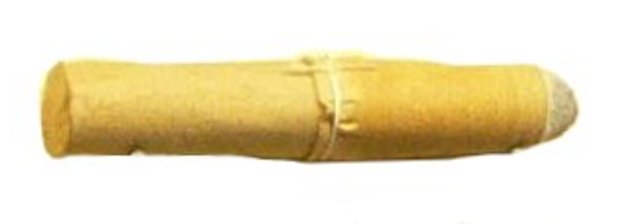|
Chassepot Rifle
The Chassepot (pronounced ''SHAS-poh''), officially known as ''Fusil modèle 1866'', was a bolt-action military breechloading rifle. It is famous for having been the arm of the French forces in the Franco-Prussian War of 1870–1871. It replaced an assortment of Minié muzzleloading rifles, many of which were converted in 1864 to breech loading (the Tabatière rifles). An improvement to existing military rifles in 1866, the Chassepot marked the commencement of the era of modern bolt action, breech-loading military rifles. The Gras rifle was an adaption of the Chassepot designed to fire metallic cartridges introduced in 1874. It was manufactured by ''Manufacture d'armes de Saint-Étienne'' (MAS), '' Manufacture d'Armes de Châtellerault'' (MAC), ''Manufacture d'Armes de Tulle'' (MAT) and, until 1870, in the ''Manufacture d'Armes de Mutzig'' in the former Château des Rohan. Many were also manufactured under contract in England (the "Potts et Hunts" Chassepots delivered to the ... [...More Info...] [...Related Items...] OR: [Wikipedia] [Google] [Baidu] |
Second French Empire
The Second French Empire (; officially the French Empire, ), was the 18-year Empire, Imperial Bonapartist regime of Napoleon III from 14 January 1852 to 27 October 1870, between the French Second Republic, Second and the French Third Republic, Third Republic of France. Historians in the 1930s and 1940s often disparaged the Second Empire as a precursor of fascism. That interpretation is no longer widely held, and by the late 20th century they were giving it as an example of a modernising regime. Historians have generally given the Empire negative evaluations on its foreign policy, and somewhat more positive evaluations of domestic policies, especially after Napoleon III liberalised his rule after 1858. He promoted French business and exports. The greatest achievements included a grand History of rail transport in France#Success under the Second Empire, railway network that facilitated commerce and tied the nation together with Paris as its hub. This stimulated economic growth a ... [...More Info...] [...Related Items...] OR: [Wikipedia] [Google] [Baidu] |
French Colonial Empire
The French colonial empire () comprised the overseas colonies, protectorates and mandate territories that came under French rule from the 16th century onward. A distinction is generally made between the "First French Colonial Empire", that existed until 1814, by which time most of it had been lost or sold, and the "Second French Colonial Empire", which began with the conquest of Algiers in 1830. At its apex between the two world wars, the second French colonial empire was the second-largest colonial empire in the world behind the British Empire. France began to establish colonies in North America, the Caribbean and India in the 17th century but lost most of its possessions following its defeat in the Seven Years' War. The North American possessions were lost to Britain and Spain but the latter returned Louisiana (New France) to France in 1800. The territory was then sold to the United States in 1803. France rebuilt a new empire mostly after 1850, concentrating chiefly in Afri ... [...More Info...] [...Related Items...] OR: [Wikipedia] [Google] [Baidu] |
Château Des Rohan (Mutzig)
The Château des Rohan ("Castle of the Rohan") is a former castle and weapons factory now serving as a museum and cultural centre in the French town of Mutzig, Bas-Rhin, Alsace. The castle, whose structure goes back to the 13th century, belonged to several families of noblemen and bishops of Strasbourg before being turned into a rifle factory after the French Revolution. The castle is most famously associated with the House of Rohan and the Chassepot rifle. History Mutzig's castle's history goes back to the fortification of the town in 1274 by Rudolph I of Germany, Rudolph of Habsburg. The medieval castle, a ''Wasserburg'' (i.e. surrounded by a moat derived from a canal) was heavily destroyed by the Swedes in 1632, during the Thirty Years' War, after having already been assaulted by Ernst von Mansfeld's troops in 1622. The city's and castle's masters, during these times marked by frequent battles and rivalries between feudalism, feudal families, were alternatively and sometimes ... [...More Info...] [...Related Items...] OR: [Wikipedia] [Google] [Baidu] |
Manufacture D'Armes De Châtellerault
The ''Manufacture d'Armes de Châtellerault'' ("Châtellerault Weapons Factory"), often abbreviated to MAC, was a French state-owned weapons manufacturer in the town of Châtellerault, Vienne. It was created by a royal decree of 14 July 1819 to manufacture swords, then (after 1850) firearms and cannons. Antoine Treuille de Beaulieu in 1840 began to develop the concept of rifled artillery at Châtellerault for the French Army. The Lebel Model 1886 rifle, the first military firearm to use smokeless powder ammunition and the primary French infantry weapon during World War I, was developed and produced here. History Following the French tradition of state arsenals competing with each other and with private industry, MAC designed and manufactured several well-known French small arms, including the FM 24/29 light machine gun and its derivatives the MAC mle 1931 and MAC 1934 machine guns, as well as the MAC 1950 (later MAS 1950) semi-automatic pistol. Some features of prototypes ... [...More Info...] [...Related Items...] OR: [Wikipedia] [Google] [Baidu] |
Manufacture D'armes De Saint-Étienne
The ''Manufacture d'Armes de Saint-Étienne'', often abbreviated to MAS ("Saint-Étienne Weapons Factory" in English) was a French state-owned weapons manufacturer in the town of Saint-Étienne, Loire. Founded in 1764, it was merged into the French state-owned defense conglomerate GIAT Industries in 2001. History Saint-Étienne was well-known as a center of sword and knife manufacturing beginning in the Middle Ages. In 1665, a Royal Arms Depot was created in Paris to store military weapons made in Saint-Étienne. The ''Manufacture d'Armes de Saint-Étienne'' was created by royal decree in 1764 under the supervision of the General Inspector of the Royal Arms Manufacture of Charleville. 12,000 weapons were being produced each year when the French Revolution The French Revolution ( ) was a period of radical political and societal change in France that began with the Estates General of 1789 and ended with the formation of the French Consulate in coup of 18 Bruma ... [...More Info...] [...Related Items...] OR: [Wikipedia] [Google] [Baidu] |
Fusil Gras Mle 1874
The Fusil Modèle 1874 or Gras was the French Army's primary service rifle from 1874 to 1886. Designed by Colonel Basile Gras, the Gras was a metallic cartridge adaptation of the single-shot, breech-loading, black powder Chassepot rifle. It was developed from 1872 to 1874 as a response to the German adoption of the Mauser Model 1871 metallic cartridge rifle. Modified in 1880 as the M80 with an improved breechblock and in 1914 as the M14 to accommodate the 8×50mmR Lebel smokeless powder cartridge, the Gras was replaced as the standard-issue service rifle by the Lebel in 1886. Description Converted from the Chassepot, the Gras was in caliber and used black powder centerfire metallic cartridges with a bullet over a charge. It was a robust and hard-hitting single-shot weapon. Additionally it had a triangular-shaped Model 1874 "Gras" sword bayonet. The Gras rifle was replaced from 1886 by the Lebel rifle. Development The Gras was manufactured in response to the development of ... [...More Info...] [...Related Items...] OR: [Wikipedia] [Google] [Baidu] |
Tabatière Rifle
The Tabatière rifle was a breech-loading rifle of the French Army. The Tabatière system was developed from 1864 as a way to convert numerous muzzle-loading weapons (usually Minié rifles) into breech-loading ones, in a process similar to that of the Snider-Enfield in Great Britain or the Springfield Model 1866 in the United States. The name "Tabatière" comes from the fact that the breech-loading mechanism looked like a snuff box.Stephen Shan''French Army 1870–71 Franco-Prussian War (2)'', p. 38/ref> Most of the conversion work had been accomplished by the time of the Franco-Prussian War. By July 1870, roughly 358,000 rifles had been converted, while 1.4 million muzzleloaders stayed in their original configuration. The ammunition was a center fire cartridge closely resembling a shortened 12 gauge shotgun shell. This weapon system was recognized as ballistically inferior to the Chassepot rifle, therefore it was used by second line troops and in defensive roles. These ar ... [...More Info...] [...Related Items...] OR: [Wikipedia] [Google] [Baidu] |
Minié Ball
The Minié ball or Minie ball, is a type of hollow-based bullet designed by Claude-Étienne Minié, inventor of the French Minié rifle, for muzzle-loading rifled muskets. It was invented in 1847 and came to prominence in the Crimean War and the American Civil War, where it was found to inflict significantly more serious wounds than earlier round musket balls. Both the American Springfield Model 1861 and the British Pattern 1853 Enfield rifled muskets, the most common weapons used during the American Civil War, used the Minié ball. Rifling, the addition of spiral grooves inside a gun barrel, imparts a stabilizing spin to a projectile for better external ballistics, greatly increasing the effective range and accuracy of the gun. Before the introduction of the Minié ball, balls had to be rammed down the barrel, sometimes with a mallet, because gunpowder residue would foul a rifled bore after a relatively small number of shots, requiring frequent cleaning of the gun. McPher ... [...More Info...] [...Related Items...] OR: [Wikipedia] [Google] [Baidu] |
Rifle
A rifle is a long-barreled firearm designed for accurate shooting, with a barrel that has a helical pattern of grooves ( rifling) cut into the bore wall. In keeping with their focus on accuracy, rifles are typically designed to be held with both hands and braced firmly against the shooter's shoulder via a buttstock for stability during shooting. Rifles are used extensively in warfare, law enforcement, hunting, shooting sports, and crime. The term was originally ''rifled gun'', with the verb ''rifle'' referring to the early modern machining process of creating groovings with cutting tools. By the 20th century, the weapon had become so common that the modern noun ''rifle'' is now often used for any long-shaped handheld ranged weapon designed for well-aimed discharge activated by a trigger (e.g., personnel halting and stimulation response rifle, which is actually a laser dazzler). Like all typical firearms, a rifle's projectile (bullet) is propelled by the contained def ... [...More Info...] [...Related Items...] OR: [Wikipedia] [Google] [Baidu] |
Breechloader
A breechloader is a firearm in which the user loads the ammunition (cartridge or shell) via the rear (breech) end of its barrel, as opposed to a muzzleloader, which loads ammunition via the front ( muzzle). Modern firearms are generally breech-loading – except for replicas of vintage weapons. Early firearms before the mid-19th century were almost entirely muzzle-loading. Mortars and the Russian GP-25 grenade launcher are the only muzzleloaders remaining in frequent modern usage. However, referring to a weapon specifically as breech loading is mostly limited to single-shot or otherwise non-repeating firearms, such as double-barreled shotguns. Breech-loading provides the advantage of reduced reloading time, because it is far quicker to load the projectile and propellant into the chamber of a gun/cannon than to reach all the way over to the front end to load ammunition and then push them back down a long tube – especially when the projectile fits tightly and the tub ... [...More Info...] [...Related Items...] OR: [Wikipedia] [Google] [Baidu] |
Bolt Action
Bolt-action is a type of manual firearm action that is operated by ''directly'' manipulating the bolt via a bolt handle, which is most commonly placed on the right-hand side of the weapon (as most users are right-handed). Most bolt-action firearms use a rotating bolt design, where the handle must first be rotated upward to unlock the bolt from the receiver, then pulled back to open the breech and allowing any spent cartridge case to be extracted and ejected. This also cocks the striker within the bolt (either on opening or closing of the bolt depending on the gun design) and engages it against the sear. When the bolt is returned to the forward position, a new cartridge (if available) is pushed out of the magazine and into the barrel chamber, and finally the breech is closed tight by rotating the handle down so the bolt head relocks on the receiver. Bolt-action firearms are generally repeating firearms, but some single-shot breechloaders also use bolt-action design as ... [...More Info...] [...Related Items...] OR: [Wikipedia] [Google] [Baidu] |
Paper Cartridge
A paper cartridge is one of various types of small arms ammunition used before the advent of the metallic cartridge. These cartridges consisted of a paper cylinder or cone containing the bullet, gunpowder, and in some cases, a primer or a lubricating and anti-fouling agent. Combustible cartridges are paper cartridges that use paper treated with oxidizers to allow them to burn completely upon ignition. History Paper cartridges have been in use for nearly as long as hand-held firearms, with a number of sources dating their use back to the late 14th century. Historians note their use by soldiers of Christian I in 1586, while the Dresden museum has evidence dating their use to 1591, and Capo Bianco writes in 1597 that paper cartridges had long been in use by Neapolitan soldiers. Their use became widespread by the 17th century. The first army to officially use paper cartridges is presumed to be "piechota wybraniecka" of Poland under the rule of Stephen Báthory. Cultural impact Pa ... [...More Info...] [...Related Items...] OR: [Wikipedia] [Google] [Baidu] |








